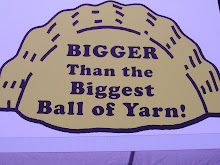Tonight marks the finale of Bravo's fourth season of Top Chef - the foodie's answer to Project Runway that perhaps also makes a bit more room for heterosexual men to like a show on Bravo. Even though I often can't eat the dishes the competitors make (last week's all-pork episode was a little tough on my kosher diet), I find myself tuned in on Wednesday nights as these epicurean craftsmen and women battle it out under grueling circumstances and given formidable odds.
Though what strikes me more than anything about the show, more than the time constraints, more than the drama between chefs, more than host Padma Lakshimi's scar is the potential impact Top Chef may have already made on the American menu. We've come a long way since the days of Julia Child and even since the more recent adventures of Emeril Lagasse.
Now anyone who gets cable can learn about such foodstuffs as sweetbreads, yuzu and ras el hanout that previously may have been reserved for those with big budgets and access to the finest restaurants. Beyond access and knowledge of "premium" or "ethnic" ingredients, Top Chef also brings highly sophisticated cooking methods into our living rooms, the likes of which would make Ferran Adria (the Spanish chef who innovated molecular gastronomy) proud.
Admittedly, I have yet to see all these effects trickle down to the chain restaurant or average neighborhood grocery store, but when you look at the show and then look at other phenomena like the locavore movement or the greater diversity of recipes in cooking magazines and across the Web - you know something is happening.
As I publish this post, the final episode is set to air in one short hour. Will Richard, Stephanie or Lisa (hooray for women having the upper hand!) have a profound impact on the food culture and eating habits of the American public? It could happen. And as Napoleon once said, "A revolution is an idea which has found its bayonets." Maybe this revolution will come at the point of a chef's knife.
Wednesday, June 11, 2008
Subscribe to:
Post Comments (Atom)


2 comments:
Just to prove my own point that much more - Kikkoman (they of soy and teriyaki sauce fame) is now running an ad campaign based on the Japanese concept of "umami." Literally it means tasty, but umami is a taste quality that relates to meatiness and comes from glutamate (aka MSG).
Basically, it's a whole new 5th taste dimension that is now coming into the American vernacular. Cool, huh?
Strangely enough, the Japanese word for eel is unagi, and rabbit is usagi. All very similar. - John
Post a Comment